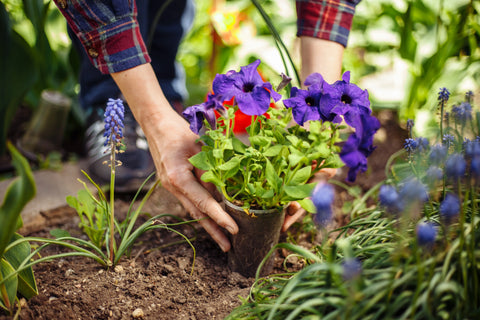How to take care of Calathea Plants

Regardless of your room decoration necessities, one plant you may want to regard is the Calathea wild variety of plants. Here are the facts you ought to learn when deciding if a Calathea plant is suitable for you.
|
What is a Calathea plant? |
The Calathea plant is a widespread plant used for indoor headquarters adornment senses. You will probably notice a Calathea plant in indoor embellishment because of their effortless maintenance and bright green look that vitalize any space where they get located. Calathea plants belong to the family of plants, Marantaceae from tropical regions. They are also considered part of the 'prayer plant' family because of the day-to-day motions of the plant's leaves. These plants move their leaves up at night and low them in the daylight. It is supposed that these moves are pointed to pursue the sun's movement to enrich sunlight absorption. |
Main Classifications |
There are several sorts of Calathea plants functional for indoor usefulness. They comprise Lancifolia, Ornate, Roseopicta, Rufibarba, Makoyana, and Orbifolia. Thanks to their broad, colorful leaves like cathedral, peacock, zebra, rattlesnake, and prayer plants, they have also been deemed funny nicknames. |
Planting Calathea Plants
|
Regardless of being famous for their easy care schedule as indoor plants located anywhere, they hold some critical requirements for healthy growth and lovely plant. |
Sunlight
|
Calathea plants require sunny, indirect rays to evolve as they are used to thrive on the floor of wildernesses and woods, where they get a small abundance of sunshine. Direct rays will scorch the leaves and provoke them to lose their playful tints. |
Watering
|
Since Calathea plants like to have wet mud, it's best to pay attention to providing a precise quantity of watering but purified one. They do not enjoy tons of water, as it can drown them, yet providing distilled water is a must-do while caring for Calathea plants. |
Temperature
|
Their tropical origins do not prefer a cold climate but moderate to high temperatures between 6580 degrees. |
Humidity
|
Getting back to Calathea tropical origins, they favor humid zones in their natural growing habitat. They can absorb moist air through the extended, verdant leaves ideal for a healthy tropical plant. |
Soil
|
Calatheas favor well-draining mud or a compound of nutrients that support preserving an average level of wetness in the ground. |
Fertilizer
|
Calathea evolves excellently with classic houseplant fertilizer during springtime, summer, and autumn. They particularly require fertilization during times of blossoming. |
Pruning
|
The excellent notice about the Calathea plant is that it doesn't necessitate pruning other than cleaning it off from brown or yellowed leaves. |
Growth
|
Calathea evolution relies on the sort of Calathea plant you maintain in your residence or enterprise space. A standard expectation would stand for a slow growth since Calatheas are lowlight plants. They are supposed to rise relatively fast, but they will not develop and extend out their pots and create a challenging situation. Calathea plants typically grow to about 2 feet while their flowers constantly bloom outdoors. There are some exceptions for indoors Calatheas, of course. For instance, the Calathea Crocuta can create stunning orange-colored flowers, while most other Calathea plants have various multicolored tints underneath their leaves. |
Indoors Maintenance
|
Calathea can be a bit oversensitive when it comes to maintaining it indoors. If you're encountering any issues with Calathea upkeep, they come from over or under-watering and lack suitable temperature or humidity mud levels. Since you are willing to preserve beautiful, tropical plants indoors, all you have to do is take care of these beautiful, green plants that will enrich any indoor room. Cubicle spaces have a high level of humidity, ideal temperature range, and indirect rays, which are more than just perfect for Calathea. |
Safety
|
Calatheas are considered non-toxic, safe, and pet-friendly to keep indoors. Nevertheless, the most suitable method is to hold houseplants at a considerable distance of kids and pets. |


